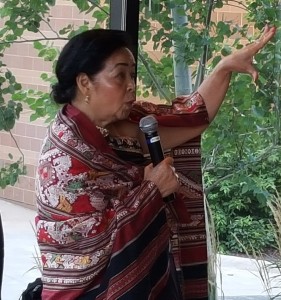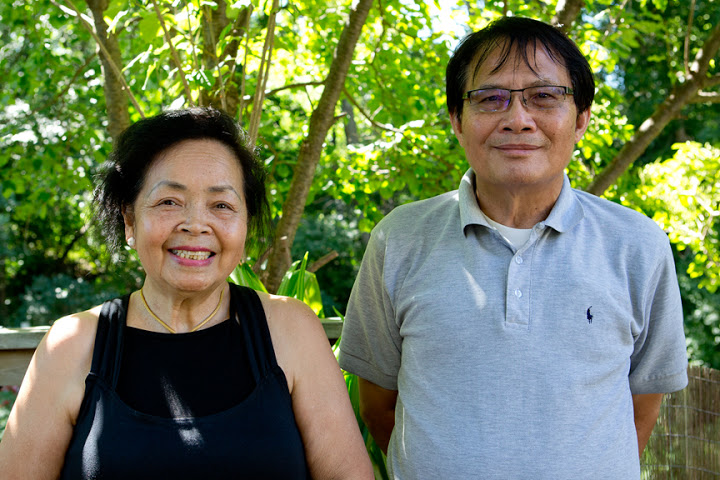Last week, SEARAC traveled to Minneapolis and St. Paul, Minnesota, as part of our year-long commemoration of 40 years since the end of the Vietnam War and the beginning of the Southeast Asian American (SEAA) refugee experience (40 & Forward: Southeast Asian Americans Rooted & Rising). Over 100 community members, artists, elders, youth, and families, as well as sponsors from foundations, corporations, and the University of Minnesota gathered to reflect on how far our communities have come over the last four decades, and celebrate both traditional and modern SEAA arts and culture. Almost 125,000 Southeast Asian Americans live in the Twin Cities, including the nation’s 2nd largest Hmong community and the 3rd largest Lao community.
One of the performers at our reception was Ms. Banlang Phommasouvanh, a Lao American teacher and master storyteller, who told a fable about a mongoose and a bird of paradise. Banlang has lived in the United States nearly 40 years, since the beginning of the mass migration from Cambodia, Laos, and Vietnam that became the largest resettlement of refugees in US history. She fled with her two daughters, one of whom had to cross the Mekong River into Thailand alone disguised as a young merchant. Her escape haunted her in nightmares for over a decade as she began a new life in the United States.
 We talked with Banlang about the needs of aging Lao Americans in the Twin Cities area, the role of storytelling in intergenerational communication, and her work with the United Senior Lao American Association, started by a group of elder Lao leaders in 2013.
We talked with Banlang about the needs of aging Lao Americans in the Twin Cities area, the role of storytelling in intergenerational communication, and her work with the United Senior Lao American Association, started by a group of elder Lao leaders in 2013.
Mari: What are some of the challenges or barriers that you see facing older Lao Americans in Minnesota?
Banlang: Our community has been here in this country for 40 years now. Many of us worked hard all those years. Now that we are old and ready to retire, we don’t know where to go! People’s kids are too busy to take care of them. So at the United Senior Lao American Association, we help them enjoy life, help them travel to see temples, and work with them to translate their knowledge about Lao culture, food, and dance for the younger generation.
We also visit sick and dying people, and help them learn to cope. Suffering is part of life, but learning to cope is important. When they die, we honor the family through our 100 days of the dead tradition, and I bring flowers from my garden.

Ms. Banlang Phommasouvanh with Mr. Saphaothong Komany, co-founder and President of the United Senior Lao American Association
Mari: Why do you tell traditional Lao stories?
Banlang: Storytelling is an important way to transmit cultural knowledge and life lessons to the younger generation. When I was growing up, my dad would tell a story to us kids at the end of each day. Then he’d say, “Which character did you love the most?” Either we would love the hero, or we would feel bad for the victim. This allowed us to learn about how to treat people and how to behave in the world by identifying with the characters. It was better than if he said, “Be good! Be kind!”
Our group recently piloted a skit with both older people and young people where they interact in poetry form. The elders tell the children a traditional story with a moral. Then the children talk to the elders about their troubles and worries, all in Lao poetry. It demonstrates how valuable cross-generational communication is.
Youth can learn how to talk to elders. It’s OK to be American, and you can act American with your peers. But it’s different at home. Kids have to learn to understand and honor their elders, and not to be ashamed of them. Ancient treasure is not always ‘old.’ Sometimes it is even more valuable for its age.
Mari: Why do you volunteer so much of your time to working with elders and youth?
Banlang: I want to see happiness and peace before I say goodbye to this world. Trump can donate his millions. But I can donate my heart.
The opinions expressed in this article are those of the author and do not necessarily reflect those of the Diverse Elders Coalition.

